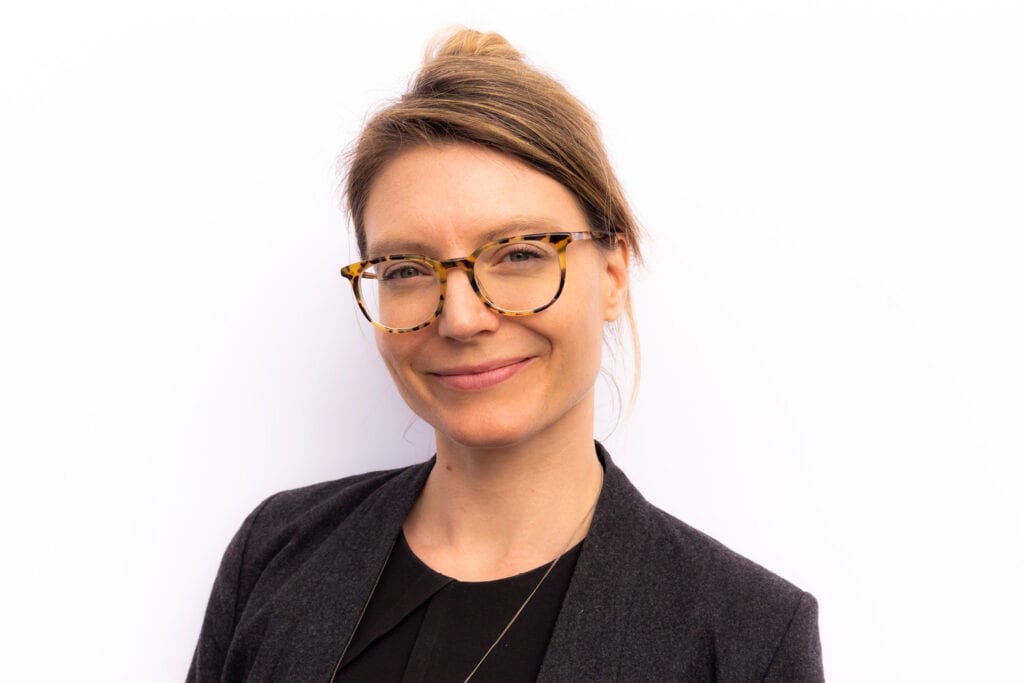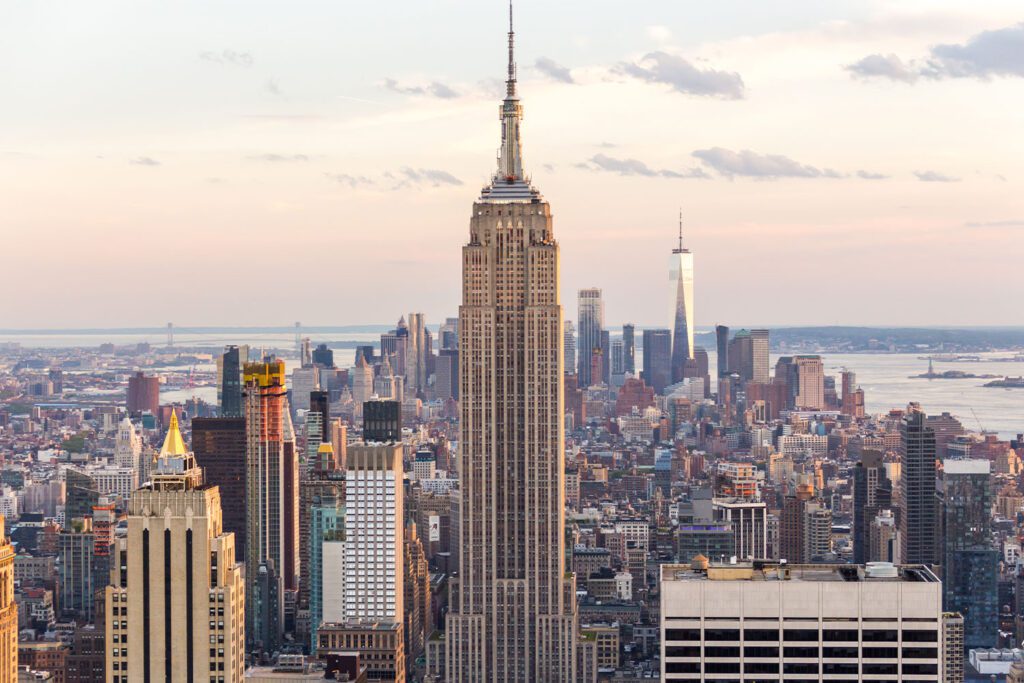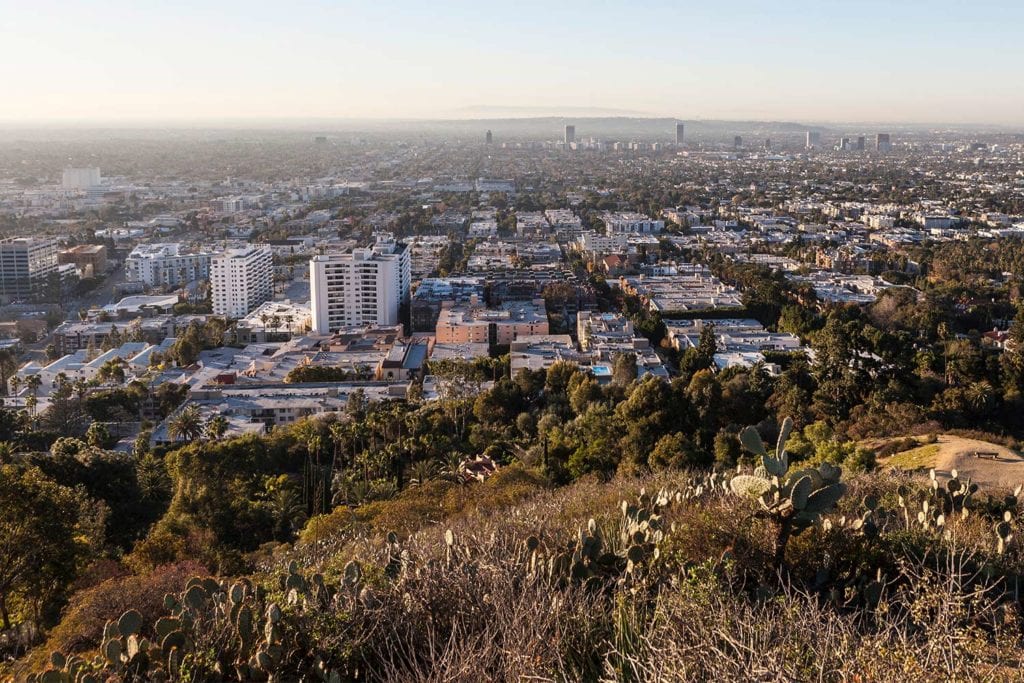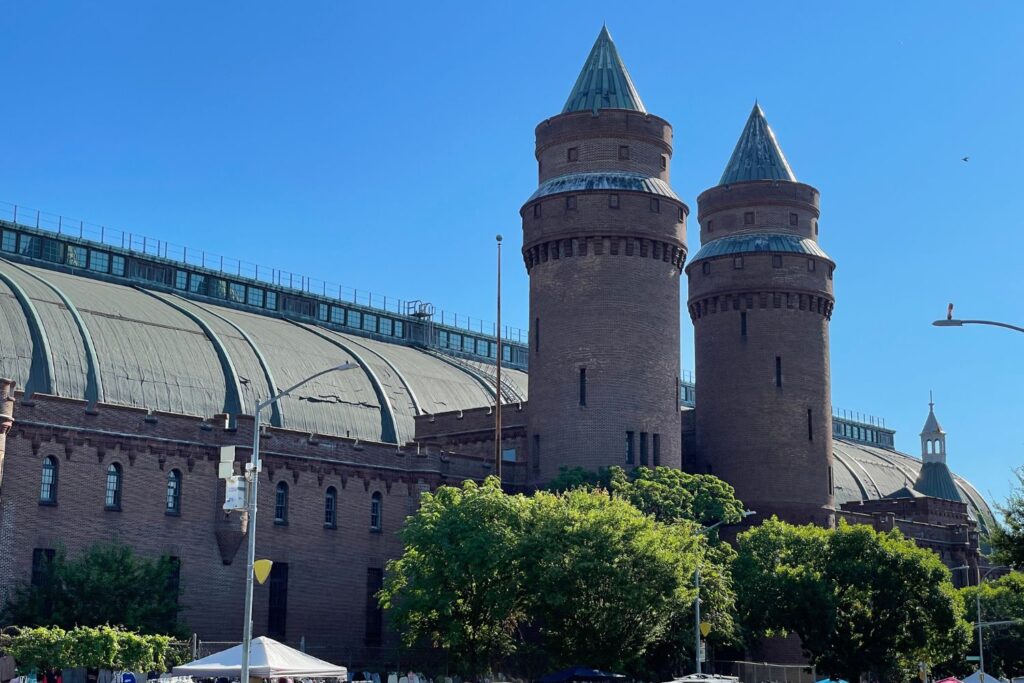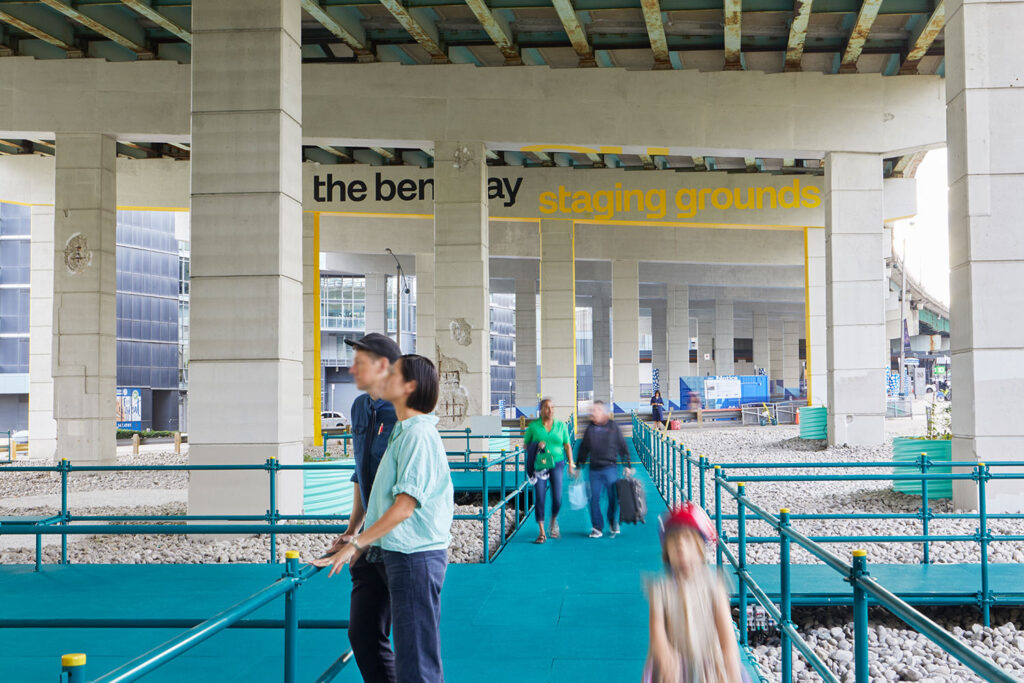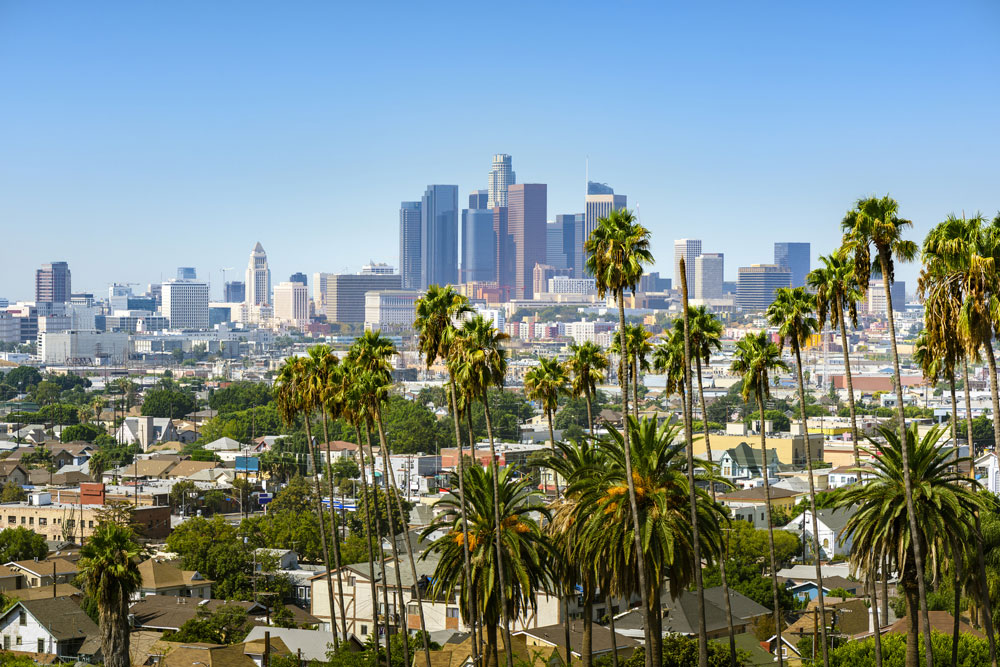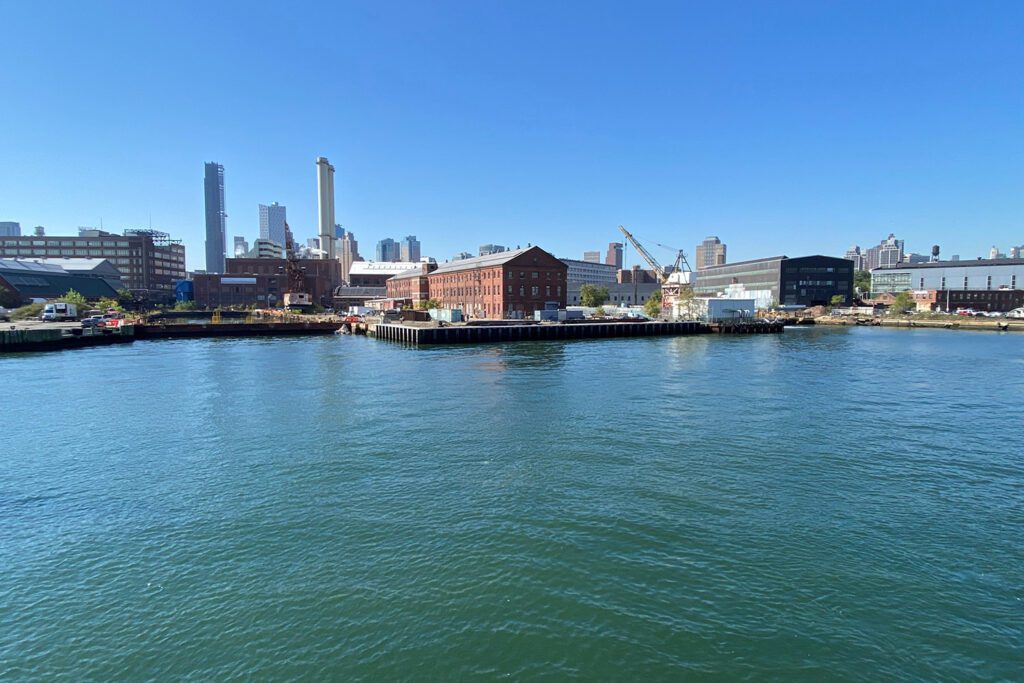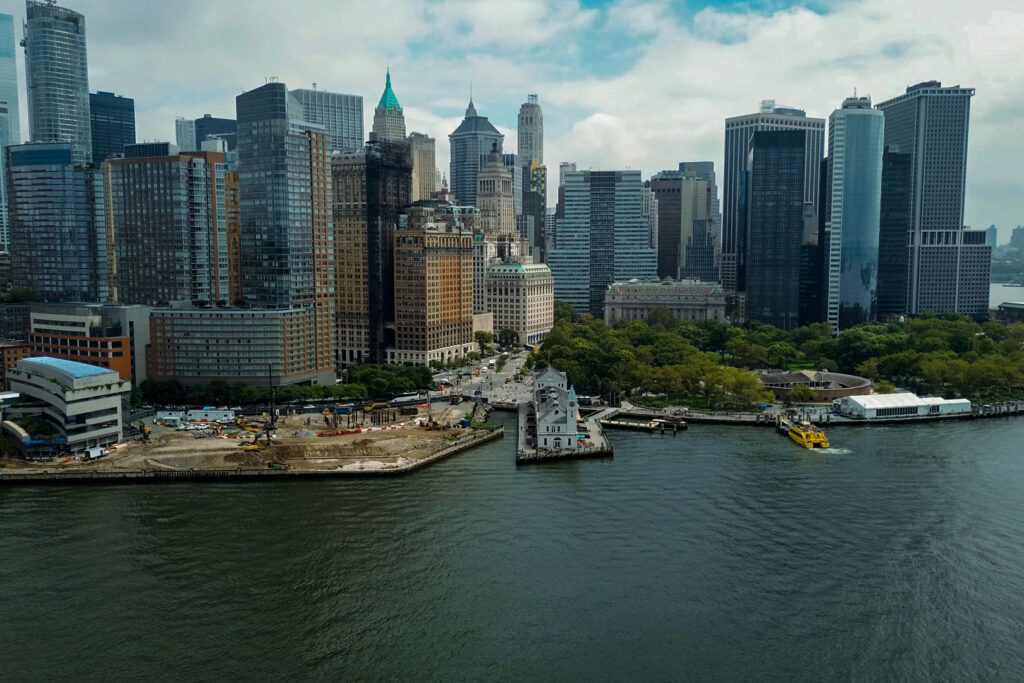
Green Economy Action Plan
New York City, USA
Project details
Client
New York City Economic Development Corporation and the Mayor’s Office of Talent and Workforce Development (NYC Talent)
Collaborator
Urbane, Public Works Partners, Nowhere Office
Duration
2022-2024
Services provided by Buro Happold
Advisory, Economics, Strategic planning, Strategy and operating model design advisory, Sustainability
The release of NYC’s Green Economy Action Plan marks a critical moment in New York City’s response to the climate crisis. Like many urban economies across the world, New York City is entering a period of rapid transformation as new policies, practices, and innovations are adopted to mitigate and adapt to climate change.
Led by New York City Economic Development Corporation (NYCEDC) and Mayor’s Office of Talent and Workforce Development (NYC Talent), the Action Plan defines the city’s green economy, quantifies it today and in the future in terms of jobs and economic impacts, identifies its workforce challenges and opportunities, and commits to 63 actions to equitably grow the industry and workforce ecosystem.
The Green Economy Action Plan is a crucial step for New York City to cement its position as a global green economy leader.
Challenge
Developing a green economy action plan requires first defining the green economy, measuring it, identifying its challenges and opportunities, and engaging a wide range of stakeholders to ensure a nuanced understanding of the local ecosystem.
Buro Happold was commissioned by NYC government, including NYCEDC and NYC Talent, to conduct a comprehensive study that achieved these requirements and enabled the development of an evidence-based action plan. This approach allowed for the development of high-impact strategies and actions for industry, workforce, and infrastructure development that will support the growth of NYC’s green economy for years to come.
The first challenge was defining what the “green economy” means. A standard definition of the green economy does not exist nationally or globally and, as a result, various cities and regions across the world have chosen to define and segment their green economies in different ways. Some jurisdictions also use different terminologies, such as the “low-carbon goods and services sector” or focus on specific subsets of the larger green economy, such as the “circular economy” and “clean energy economy.”
For the purposes of this Action Plan, New York City needed a tailored green economy taxonomy that includes the major green activities taking place in the local economy and aligns with the City’s policy priorities and economic goals.

The second challenge was quantifying the green economy’s current and future size, its economic impacts, and opportunities. A standard methodology to measure the entire green economy does not exist, primarily because it’s a broad ecosystem consisting of many different sectors of varying levels of maturity that are not tracked by traditional economic data sources, such as the Bureau of Labor Statistics. As a result, data availability varies considerably across green economy sectors, with more established sectors having some readily available economic data and nascent ones having little to none.
The third challenge was engaging enough stakeholders to ensure a rigorous and nuanced enough understanding of the local green economy ecosystem to guide policy and investment decisions. NYC’s green economy is a large, multi-sector ecosystem that encompasses many different types of employers and workers, and other enabling players. As such, developing an understanding of the challenges and opportunities specific to local green economy employers and workers requires engaging a large number and diverse range of stakeholders.


Solution
A multidisciplinary Buro Happold team, including sustainability experts, economists and researchers, was assembled to support New York City Economic Development Corporation and the Mayor’s Office of Talent and Workforce Development (NYC Talent)’s to develop the in-depth study and Action Plan. In launching the plan in February 2024, New York City leaders put forth a “vision for an economic future that puts human well-being at the forefront” and emphasized the City’s goal to become a global green economy leader.
Establishing a common understanding of the green economy is a critical first step for any government looking to develop targeted strategies to support green economy growth. Buro Happold collaborated with NYCEDC and NYC Talent to develop the City’s first ever definition of the green economy, setting forth for a common understanding of NYC’s green sectors. This definition provided the framework to measure and quantify the green economy, analyze its challenges and opportunities, and develop the Action Plan strategies.
Another crucial step for governments looking to measure their green economies and develop growth strategies is to implement a research methodology that leverages the best-available data and stakeholder insights.
Leveraging NYC’s first-ever green economy definition, Buro Happold developed rigorous and bespoke analysis methodologies to measure the green economy’s current size and economic impacts, forecast its future economic opportunities, and analyze its workforce characteristics. Our experts also engaged and interviewed over 100 industry and workforce stakeholders across all green economy sectors to develop and vet our findings. This included building energy efficiency contractors, solar developers, infrastructure financiers, labor unions, workforce training providers, and various tradespeople to name only a few.


Ultimately our analysis found that NYC’s green economy spans eight sectors and 21 subsectors, accounts for about 3 percent of the city’s jobs today, and can become one of the city’s largest industry and workforce ecosystems over the next decade, hosting nearly 400,000 jobs by 2040.
Realizing this opportunity requires investment, innovation, and intentional support of diverse businesses and robust career pathways. The city needs a skilled and diverse workforce to power this growth, and 21 key occupations were identified as being particularly critical to sustainable growth.
These findings among many others underpin the Green Economy Action Plan, in which New York City commits to 63 actions through 2030 to support the equitable growth of the green economy. These actions will advance five key goals: decarbonize buildings and construction, develop a renewable energy system, enable low-carbon alternatives in the transportation sector, catalyze innovations in climate technologies and build an equitable green economy ecosystem.
The Green Economy Action Plan builds on the momentum of 2023 PlaNYC: Getting Sustainability Done and related City initiatives, by laying out a decade of investment in industry, workforce, and infrastructure development to make NYC a global green economy leader.
Specific actions announced in the Action Plan include launching and applying circular construction guidelines, launching community hiring networks, activating nearly 500 MW of battery storage capacity with tax incentives, creating the largest EV charging facility in the city, investing $725 million to across the new Harbor Climate Collaborative (a joint effort to build a climate innovation ecosystem in the New York Harbor), investing up to $100 million to develop a Climate Innovation Hub at the Brooklyn Army Terminal, and developing a green workforce training facility in every borough.

Value
Buro Happold’s advisory and bespoke research enabled New York City leaders to develop key actions and investments to grow the city’s green economy. This comes at a crucial moment for New York City. Global climate action is starting to drive structural shifts in the global economy and NYC is committed to being at the forefront of this transformation.
Crucially, unprecedented amounts of federal and state funding aimed at accelerating the green transition is being deployed today. NYC is committed to seizing this moment and leveraging public and private investments to drive sustainable and equitable economic prosperity for generations to come. The Green Economy Action Plan—in articulating the vision, the facts, and the strategies to achieve this—will help position the city to capitalize on this once-in-a-generation opportunity.
Cities and regions across the United States and beyond are presented with similar opportunities offered by the global green transition. Yet jurisdictions face many challenges in trying to maximize and localize the benefits of this transition. Buro Happold’s experts offer advisory, research, and insights to help governments support the growth of their green economies through industry, workforce, and infrastructure development.





